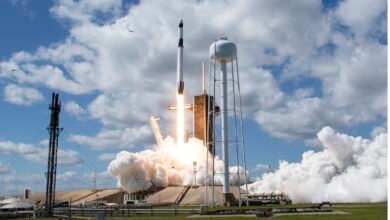How to Use AI in Climate Change Predictions and Mitigation in 2023

In recent years, climate change has become one of the most pressing challenges facing our planet. As the effects of global warming continue to intensify, it has become increasingly important to find innovative solutions to address this crisis. One such solution is the use of Artificial Intelligence (AI) in climate change predictions and mitigation. In this article, we will explore how AI can be harnessed to better understand and combat climate change in 2023.
Introduction to AI in Climate Change

What is AI?
AI, or Artificial Intelligence, refers to the simulation of human intelligence in machines that are programmed to think and learn like humans. It encompasses a wide range of technologies, including machine learning, deep learning, and neural networks.
The Climate Change Challenge
Climate change poses a significant threat to our environment and society. Rising temperatures, extreme weather events, and sea-level rise are just a few of the consequences of global warming. To address these challenges effectively, we need advanced tools and technologies.
The Role of AI in Climate Change Predictions
Data Analysis and Modeling
AI can analyze vast amounts of climate data quickly and accurately. By processing historical climate data, AI algorithms can identify trends, patterns, and anomalies that humans might miss. This is crucial for making accurate predictions about future climate changes.
Predicting Extreme Weather Events
One of the key applications of AI in climate change is predicting extreme weather events. AI models can analyze atmospheric conditions, ocean currents, and other factors to provide early warnings for hurricanes, heatwaves, and other disasters.
Climate Modeling
AI-driven climate models can simulate various climate scenarios, helping scientists understand the potential impacts of different policy decisions and mitigation strategies. This enables policymakers to make informed choices to mitigate climate change.
AI in Climate Change Mitigation
Renewable Energy Optimization
AI can optimize the generation and distribution of renewable energy sources like solar and wind power. This can reduce greenhouse gas emissions and make our energy systems more sustainable.
Smart Agriculture
AI-powered agriculture solutions can help farmers optimize crop yields while minimizing resource usage. This contributes to reducing the carbon footprint of agriculture.
Carbon Capture and Sequestration
AI can enhance carbon capture and sequestration technologies, which are essential for removing excess carbon dioxide from the atmosphere.
Challenges and Limitations
While AI holds great promise in addressing climate change, it also faces challenges. These include data privacy concerns, algorithm biases, and the high computational power required for some AI applications.
Future of Using AI in Climate Change Predictions and Mitigation

In recent years, the impacts of climate change have become increasingly evident, with rising global temperatures, extreme weather events, and environmental degradation threatening our planet. To combat this crisis, scientists and researchers are turning to advanced technologies, and one of the most promising tools in their arsenal is Artificial Intelligence (AI). In this article, we will explore how AI is shaping the future of climate change predictions and mitigation strategies in 2023.
Understanding the Current Climate Crisis
Before delving into the role of AI, it’s crucial to understand the gravity of the current climate crisis. Rising greenhouse gas emissions, deforestation, and the depletion of natural resources are accelerating global warming, leading to catastrophic consequences. To address this, we must turn to innovative solutions, and AI holds immense potential.
Harnessing Big Data with AI
Predicting Climate Patterns
One of AI’s primary contributions to climate change mitigation is its ability to analyze vast amounts of data quickly and accurately. AI algorithms can process historical climate data, satellite imagery, and real-time information to predict climate patterns with unprecedented accuracy. These predictions help policymakers and environmental organizations make informed decisions and plan for climate-related challenges.
Early Warning Systems
AI-powered early warning systems are becoming indispensable in minimizing the impact of natural disasters caused by climate change. By analyzing data from various sources, including weather stations and ocean sensors, AI can provide timely alerts about impending events such as hurricanes, droughts, and floods, allowing for better preparedness and evacuation planning.
Enhancing Renewable Energy
Optimizing Energy Production
AI is playing a crucial role in optimizing renewable energy production. Solar and wind farms equipped with AI systems can adjust energy generation in real-time based on weather conditions and energy demand. This not only maximizes energy efficiency but also reduces the reliance on fossil fuels.
Energy Storage Solutions
AI is also improving energy storage solutions. Batteries that incorporate AI algorithms can store excess renewable energy during periods of low demand and release it when needed, making clean energy sources more reliable and accessible.
Climate Modeling and Simulation
Simulating Scenarios
AI-driven climate models and simulations enable scientists to explore various scenarios and assess the effectiveness of mitigation strategies. These simulations consider complex interactions between different environmental factors and offer insights into the potential outcomes of policy changes.
Tailoring Mitigation Efforts
By using AI-generated data, governments and organizations can tailor their mitigation efforts to address specific regional challenges. This targeted approach ensures that resources are allocated efficiently to combat climate change at the local level.
AI-Powered Environmental Monitoring
Preserving Ecosystems
AI is instrumental in monitoring and protecting fragile ecosystems. Drones equipped with AI technology can survey remote areas, track wildlife movements, and detect illegal logging or poaching activities, enabling conservationists to take immediate action.
Ocean Health

AI is also being applied to monitor the health of our oceans. Autonomous underwater vehicles equipped with AI can collect data on temperature, acidity, and marine life, helping us better understand the impact of climate change on our seas.
Conclusion
The use of AI in climate change predictions and mitigation represents a powerful tool in the fight against global warming. By harnessing the capabilities of AI, we can better understand climate patterns, predict extreme events, and implement effective mitigation strategies. As we move forward in 2023, it is essential to continue investing in AI research and development to create a sustainable future for our planet.
Read more : How to Adopt Hyperloop Technology for High-Speed Travel in 2023
FAQs(AI in Climate)
How does AI help in climate change predictions?
AI processes vast amounts of climate data to identify trends and predict future climate changes accurately.
Can AI help reduce greenhouse gas emissions?
Yes, AI can optimize energy systems, agriculture, and carbon capture technologies, contributing to greenhouse gas reduction.
What are the limitations of AI in addressing climate change?
AI faces challenges like data privacy concerns, algorithm biases, and high computational power requirements.
Are there any AI-powered climate change mitigation projects in progress?
Yes, several projects focus on using AI to enhance renewable energy, agriculture, and carbon capture technologies.
How can individuals contribute to AI-based climate change efforts?
Individuals can support AI research, adopt sustainable practices, and advocate for policies that promote AI-driven climate solutions.\
Read more : How to Integrate Swarm Intelligence in Decision Making in 2023








One Comment